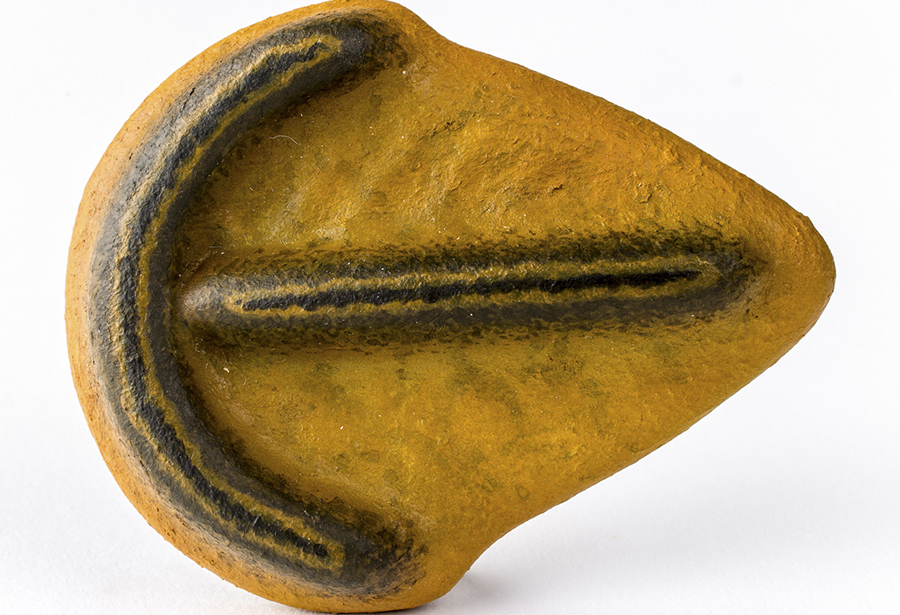
Australian Parvancorina minchami life restoration at MUSE – Science Museum in Trento, Italy. Image by Matteo De Stefano, Wikimedia Commons.
The growth and lifespan of Parvancorina minchami, small anchor-shaped animals that lived on the seafloor about 550 million years ago, resemble that of current marine invertebrates like golden shrimp and Baltic clam.
New research by a team at the Russian Academy of Sciences, Harvard University and the Sea Around Us initiative at the University of British Columbia shows that P. minchami’s longevity was about four years, that they could reach close to 20 millimetres in length, and that their pace of growth was similar to that of small recent invertebrates.
“These results bring us closer to understanding the functions performed by early multicellular animals in Ediacaran ecosystems,” said Dr. Andrey Ivantsov, lead author of the study published in the journal Paleobiology, and a researcher at the Borissiak Paleontological Institute of the Russian Academy of Sciences.
The Ediacaran is the period preceding the Cambrian and is considered the time of the widespread distribution of the first animals.
A single event that took place during that time in the White Sea region of Russia fossilized hundreds of animals, including many specimens of the unusual Parvancorina minchami, which are kept and studied at the Borissiak Institute.
Using the measurements of 211 of those fossils, which had been previously categorized into distinct size groups, presumed to reflect distinct ages, the researchers fitted growth data over the animals’ lengths over time and retained the best-fitting growth curve, which estimated how fast these animals grew and for how long.
For this, they employed a method and software called Electronic Length-Frequency Analysis (ELEFAN), which was developed in the early 1980s by Dr. Daniel Pauly, principal investigator of the Sea Around Us initiative at the UBC’s Institute for the Oceans and Fisheries.
“Since ELEFAN provides quantitative insights into the growth dynamics and longevity of living marine invertebrates, we were able to use it to connect the huge literature on those dynamics to data on the fossils of Parvancorina minchami,” Dr. Pauly said. “Thus, our work contributed to understanding how they grew and for how long. Previous studies had already identified that, given that these animals had no limbs, they used simple muscle fibers to orient themselves relative to the ocean currents and gain nutrition by ingesting suspended food through external cells. Our research allowed us to establish a growth curve for what may be one of the oldest multicellular animal species and brought us one step closer to understanding their biology.”
In recent years, Dr. Pauly used ELEFAN to connect the growth dynamics of Paleozoic animals to those of modern marine crustaceans, contributing to the understanding of the paleobiology and ecology of ancient animals and ecosystems.
“In terms of morphology, these earliest animal fossils can seem quite alien, but this kind of analysis brings them much closer to animals we know and understand,” said Dr. Andrew Knoll, co-author of the study and Fisher Research Professor of natural history and Earth and planetary sciences at Harvard University.
The paper “Growth of the enigmatic Ediacaran Parvancorina minchami” was published in Paleobiology, doi: https://doi.org/10.1017/pab.2024.55.

